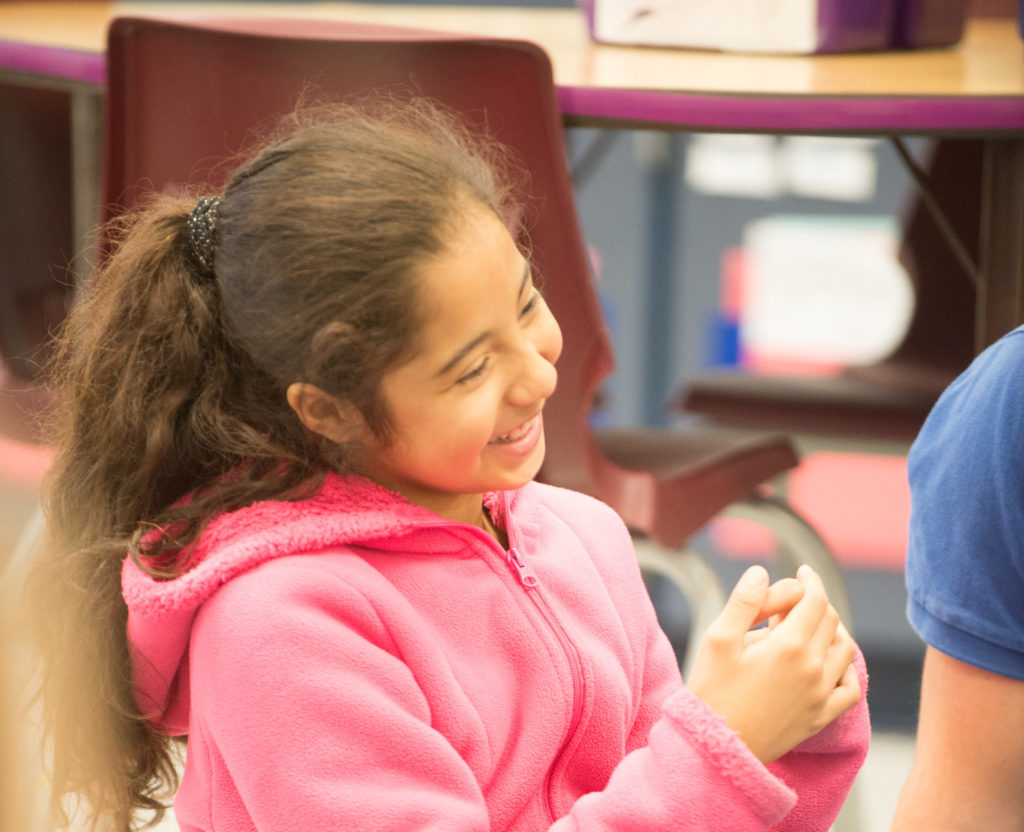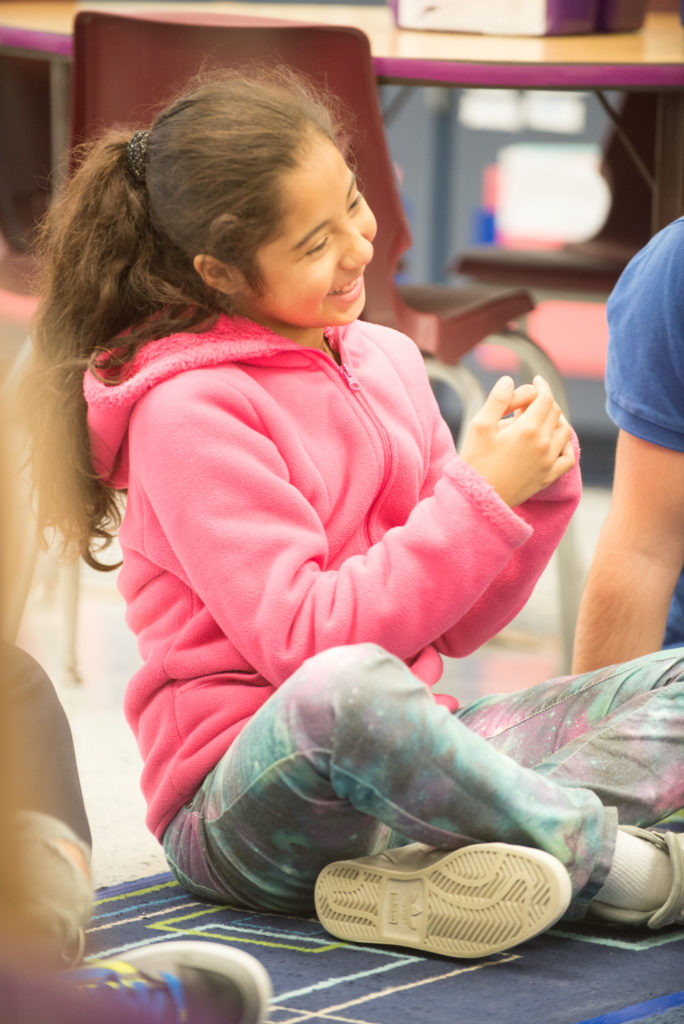

“30 minutes!” Owen yelled immediately.
My students this year call out a lot. They blurt out answers, they snap at each other, they announce when someone makes a mistake. So I wasn’t surprised that Owen yelled a response without seeming to think about it . . . but it was unusual that his classmates didn’t immediately jump all over him for being wrong.
Instead, I looked at him incredulously and asked, in a joking but friendly tone. “30 minutes? That long? To put away two things?”
The absurdity struck him, and he grinned, “No, 30 seconds!”
He started laughing then, and his classmates started laughing, and soon I did, too. As we laughed together, I suddenly realized that in the two months we’d been together, this was the first time we’d had a relaxed moment together. I knew I’d been feeling stressed, but I hadn’t really understood that my students weren’t having fun either. Joy was missing from our classroom.
Since then, I have made a conscious effort to make our school days more fun. Over the next few weeks, I’ll write about some of the specific things I’ve tried, including teaching silly energizers, introducing more hands-on learning materials, meeting with students individually so I can get to know each of them better, seizing opportunities to turn challenging situations into problem-solving opportunities, and diverging from the curriculum to follow students’ interests from time to time. These sorts of strategies have always been part of my teaching repertoire, but this year for various reasons, I’d set them aside.
Now I’m so glad I brought them back into my teaching! The things I’ve been doing are mostly small and don’t take much time, but I’ve noticed real changes as a result. There’s a calmer, more positive energy in my class since we began having more fun. The children are more excited about learning and are beginning to think of themselves as problem-solvers. Some of my quieter students are beginning to open up, and a sense of community is starting to form.
As for me, I’m smiling more and enjoying my students more. I’m more aware of their interests, and I find myself thinking about how I can bring those interests into what we are learning about. And I have more patience for the behavior problems now—I don’t automatically go into negative mode, thinking “Here we go again.” I feel more positive, so problems don’t seem as daunting. I feel like I’m reconnecting with the reasons why I love teaching. I hope that sharing my stories will help you feel the same way!
Suzy Ghosh is a second grade teacher at Bush Hill Elementary school in Fairfax County, Virginia, and is also a Responsive Classroom consulting teacher.